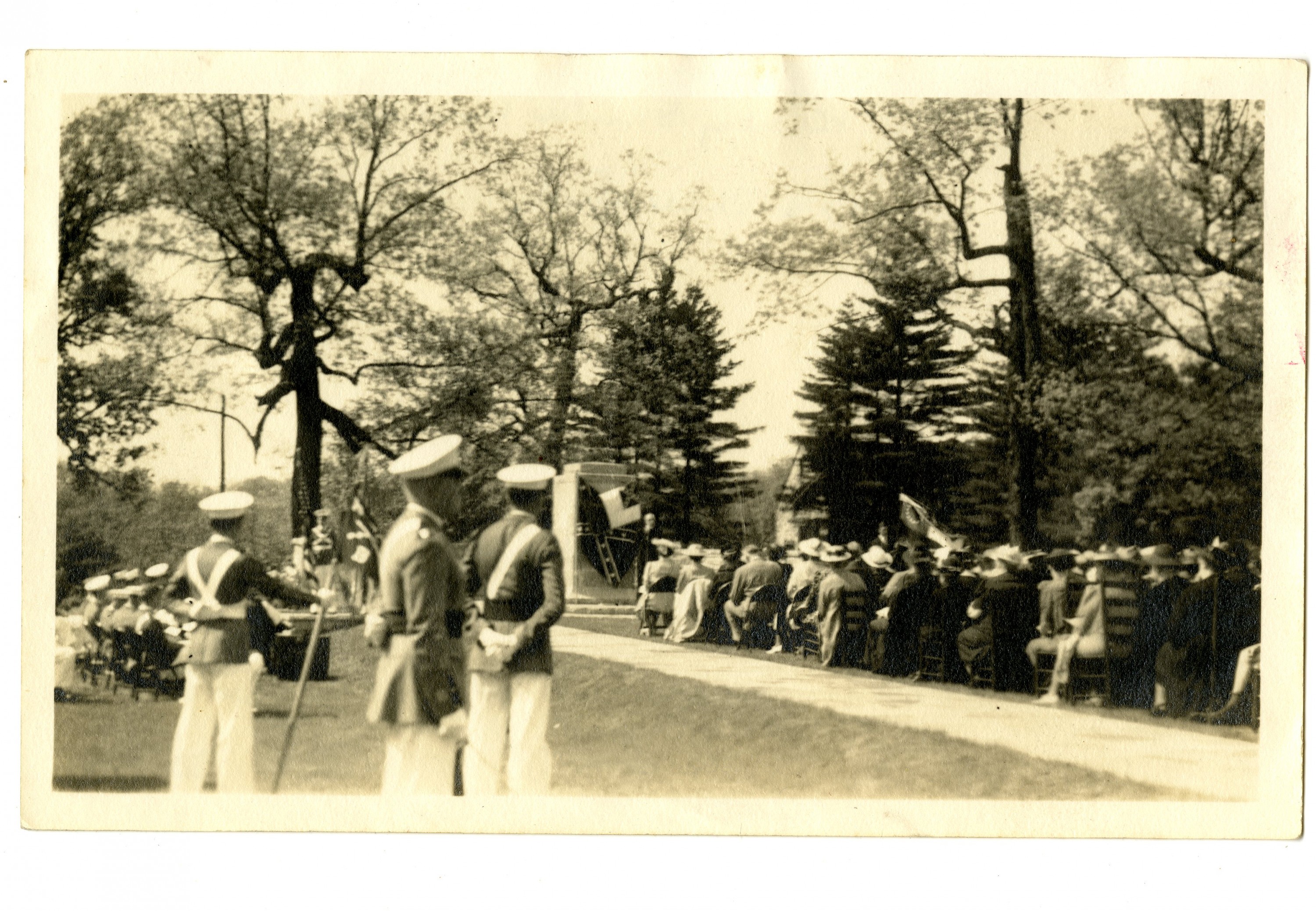
The local chapter of the United Daughters of the Confederacy raised the funds to erect a memorial to CSA General Edmund Kirby Smith. The memorial, draped in flags of the Confederacy, was dedicated on May 16, 1940, at a ceremony presided over by Vice-Chancellor Alexander Guerry and the Rt. Rev. Henry J. Mikell, the university’s chancellor and Bishop of Atlanta. Uniformed cadets from the Sewanee Military Academy watch from the left. Recently the university relocated the memorial to the University Cemetery from its prominent place on University Avenue.
The earliest histories of the University have omitted or downplayed the ways in which slavery was knit into the very fabric of its design and founding, emphasizing instead the spiritual and religious mission of launching an Episcopal Church university to train young men for ministry in the South. But for the founding bishops—Leonidas Polk, James H. Otey, and Stephen Elliott—and the hundreds of men and women who pledged their wealth to the “southern university” project, the defense of slavery and the belief in its morality were at the core of their sectarian aims and their understanding of themselves as dutiful Christians. The three bishops were eloquent defenders of slavery and believed that bondage was—in Elliott’s words—a “sacred charge” and “a great missionary institution … arranged by God.” Otey denounced those who called slavery a sin against God “infidels.”
In recent years scholars have given greater attention to the subject of slavery and the University. The Project goes beyond this work by foregrounding the subjects of slavery, race, and race relations in its examinations of the University’s first 150 years. Compiling this scholarship is essential to our understanding of the origins of the University of the South as an institution of the Episcopal Church that was founded by slaveholders, for the benefit of slaveholders, and to serve and advance a slaveholding society—a civilization based on bondage. As important, a more complete understanding and recognition of that history and its legacies will enable us to meet our obligations to educate students and members of this community past and future and to realize our pledge to be an inclusive university of and for the diverse citizenry of the twenty-first-century South.

